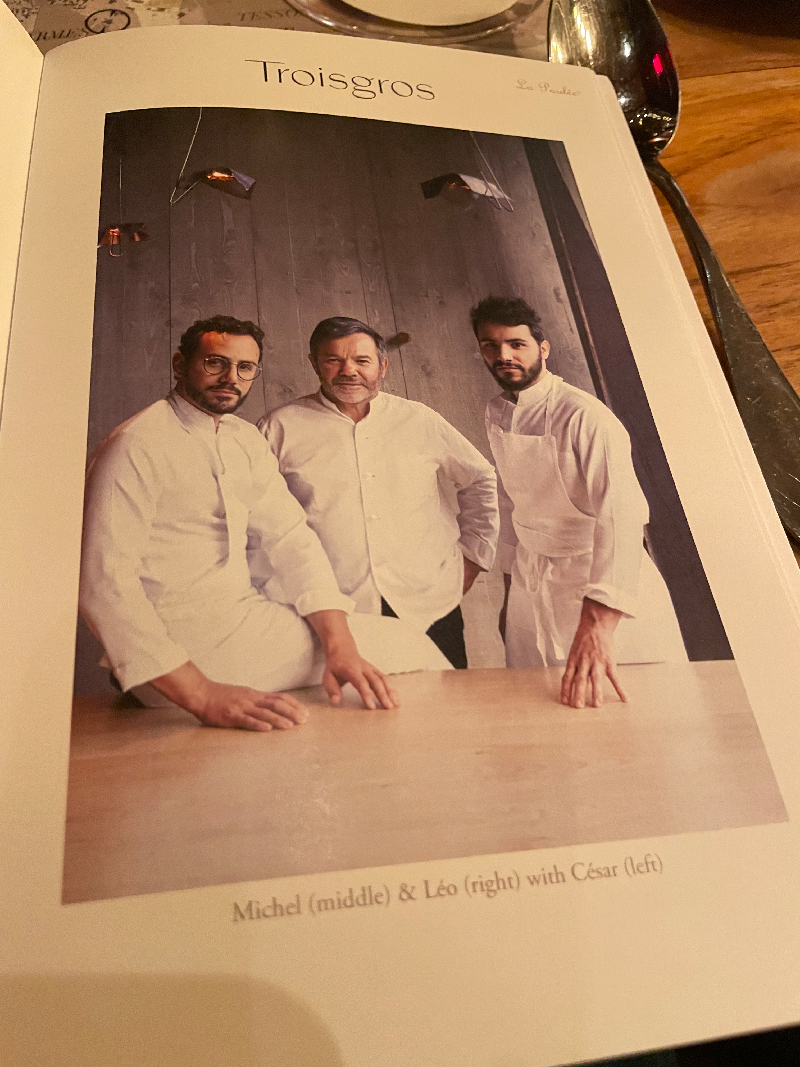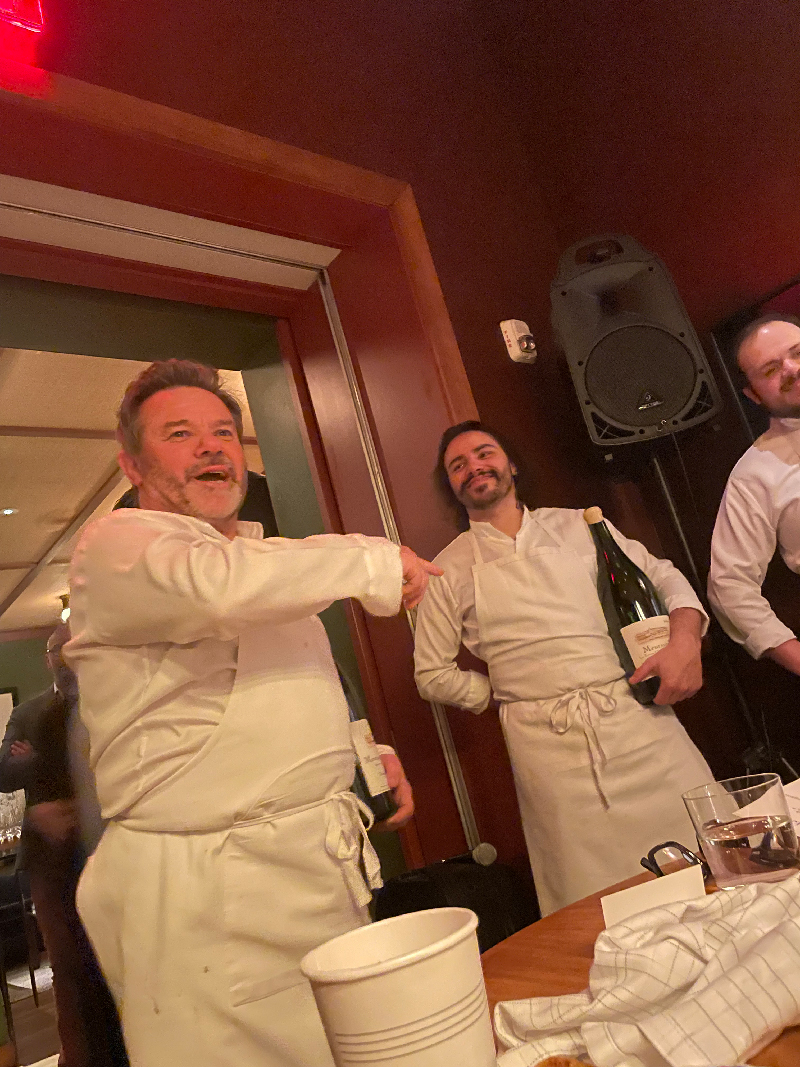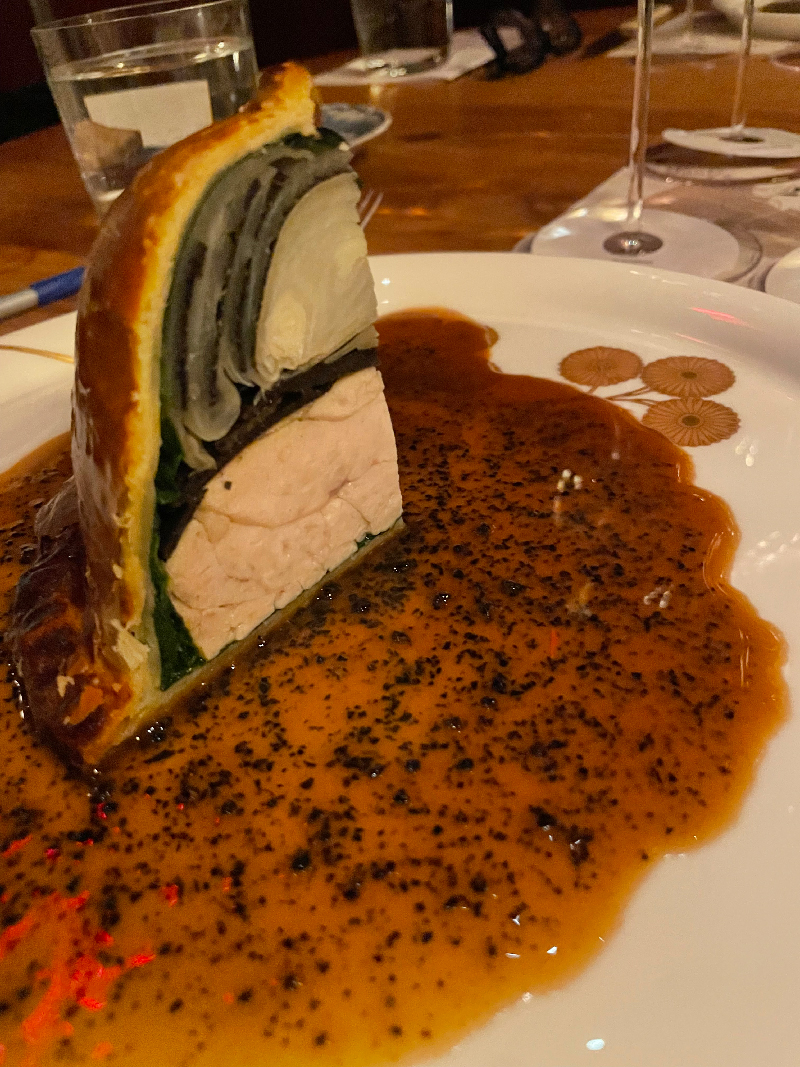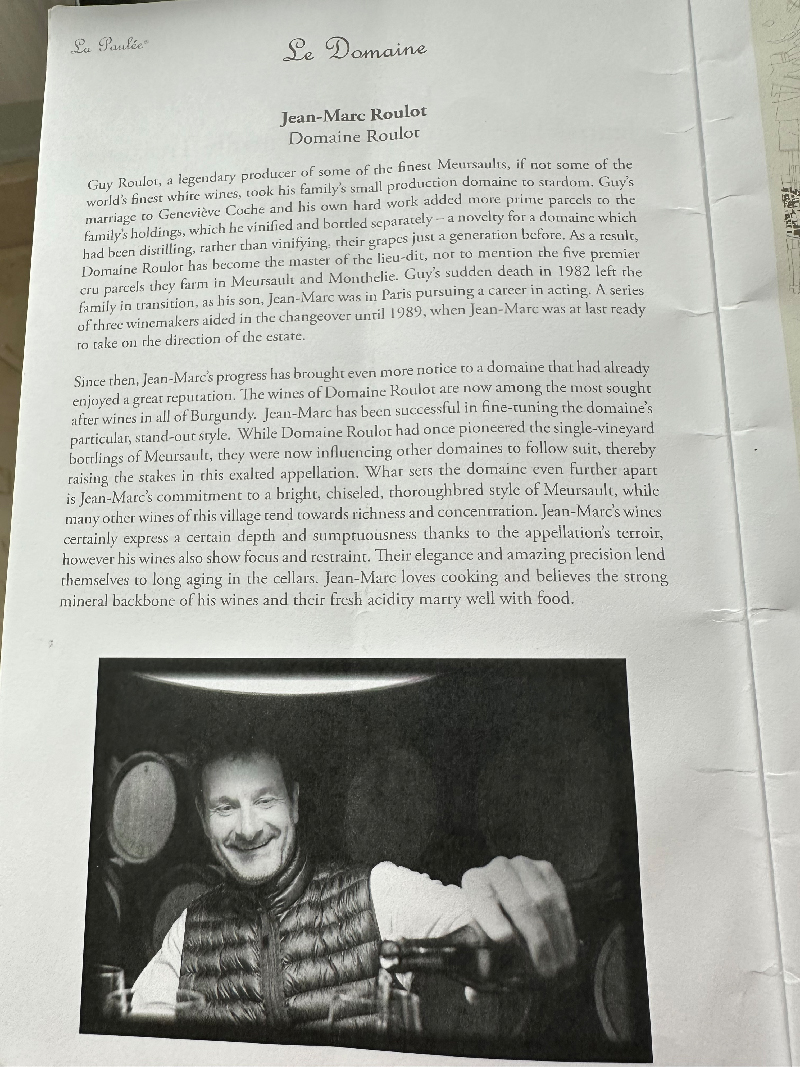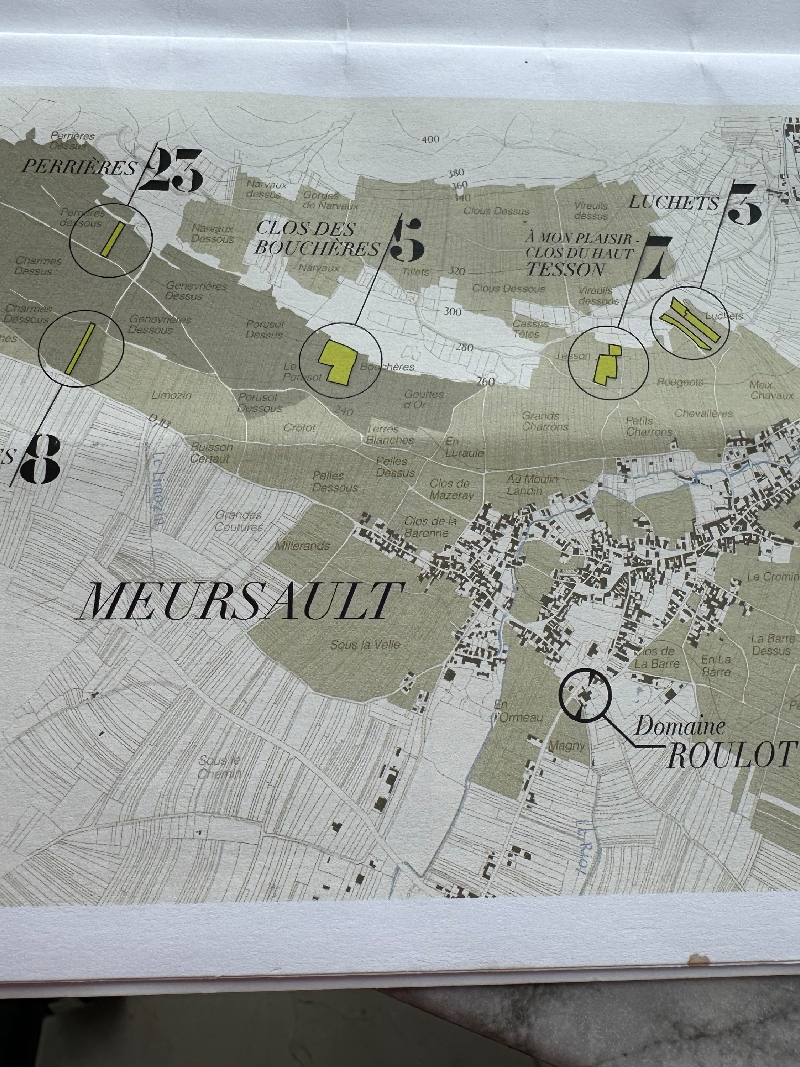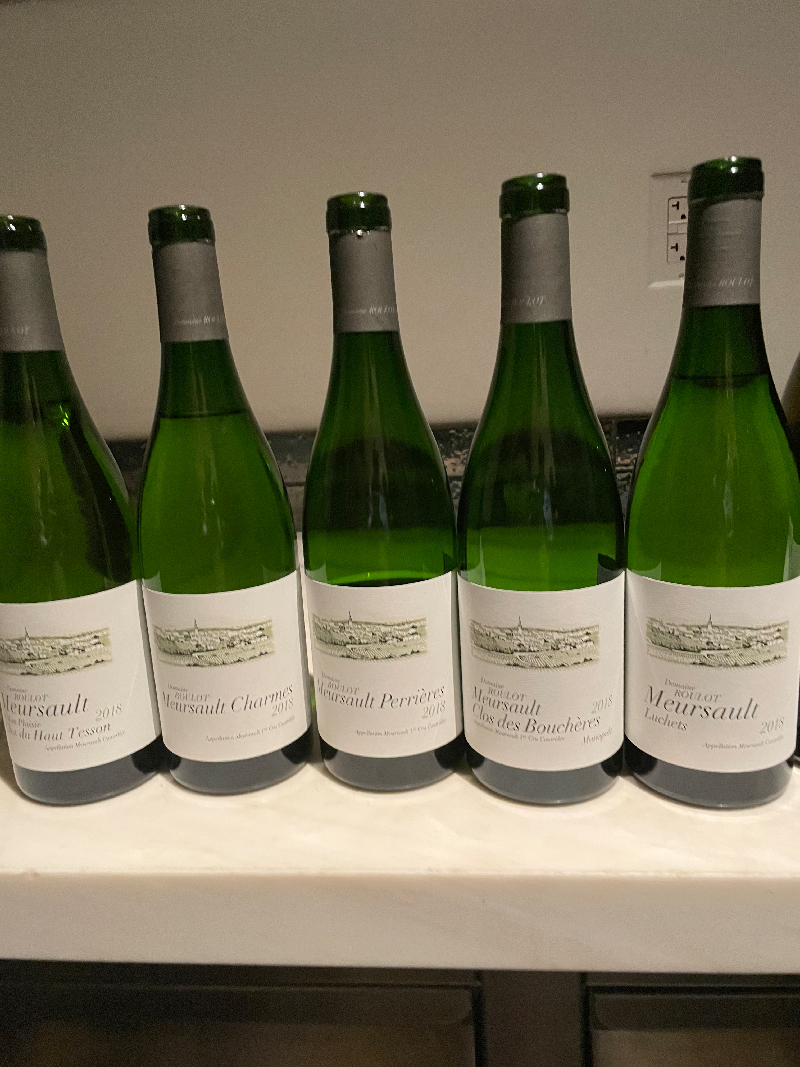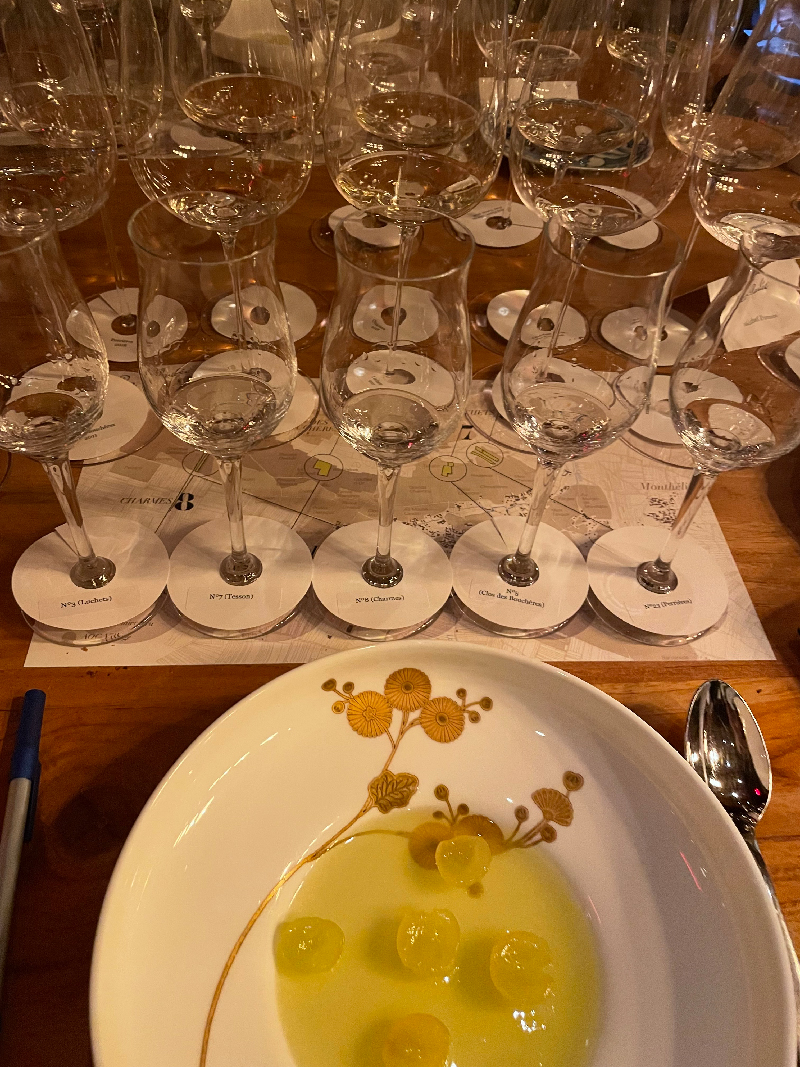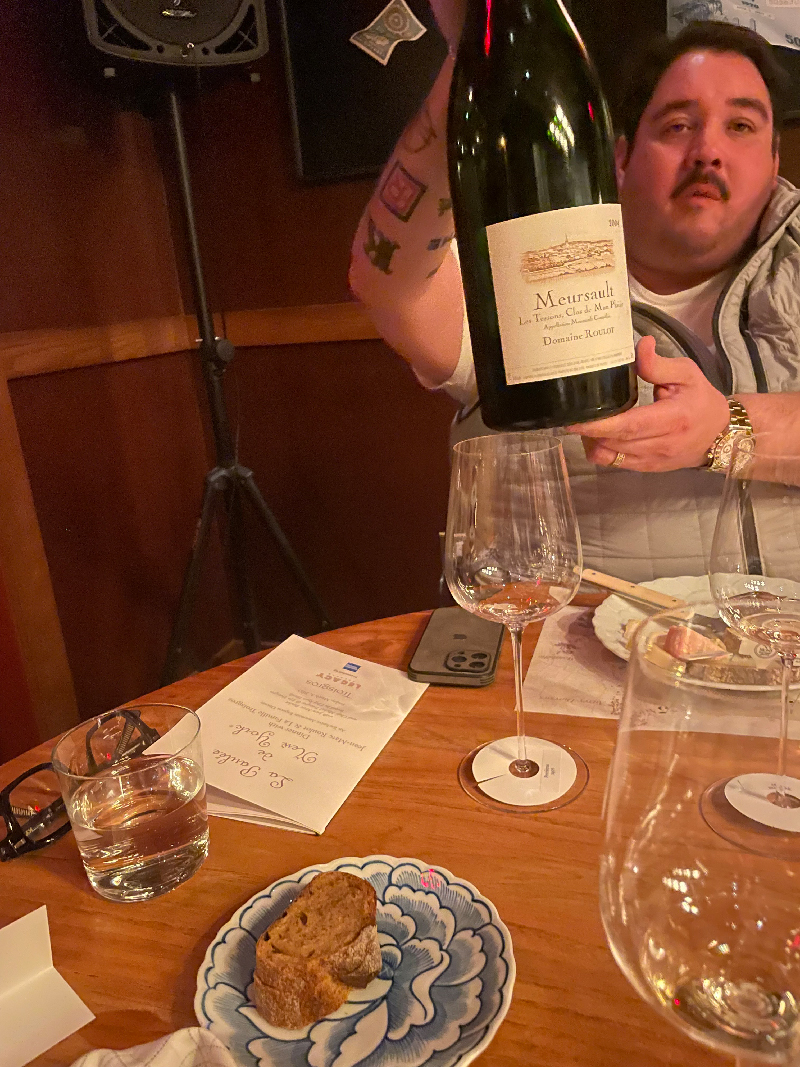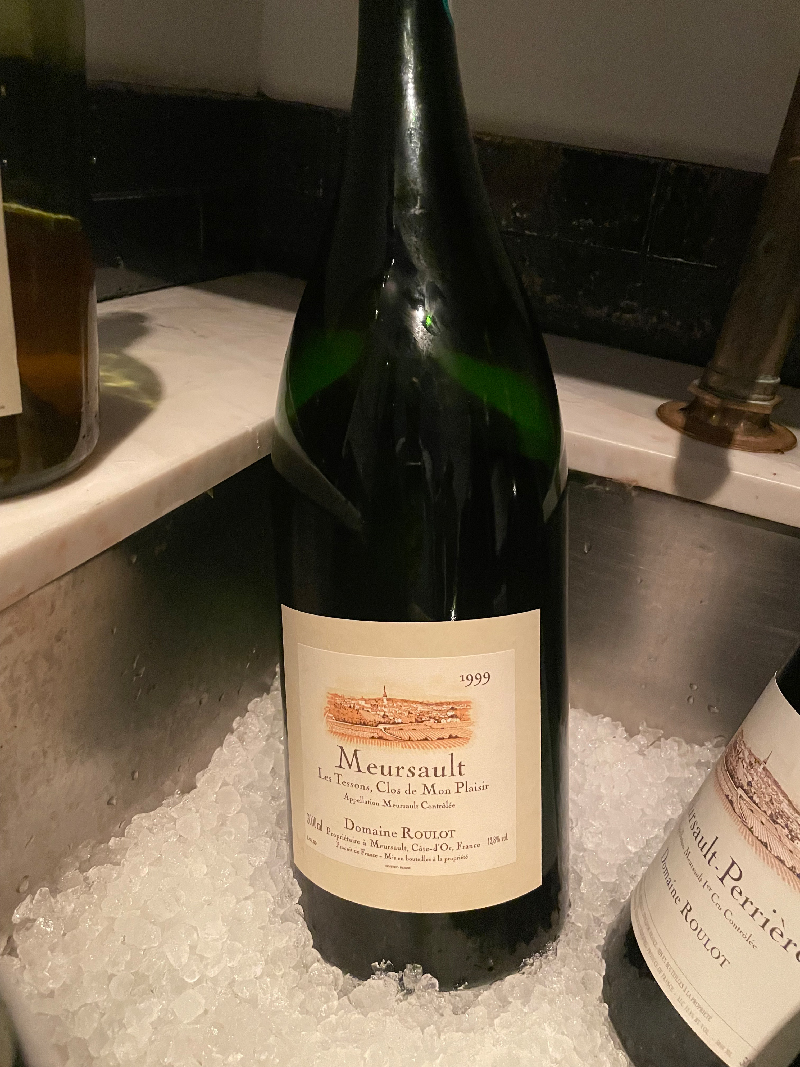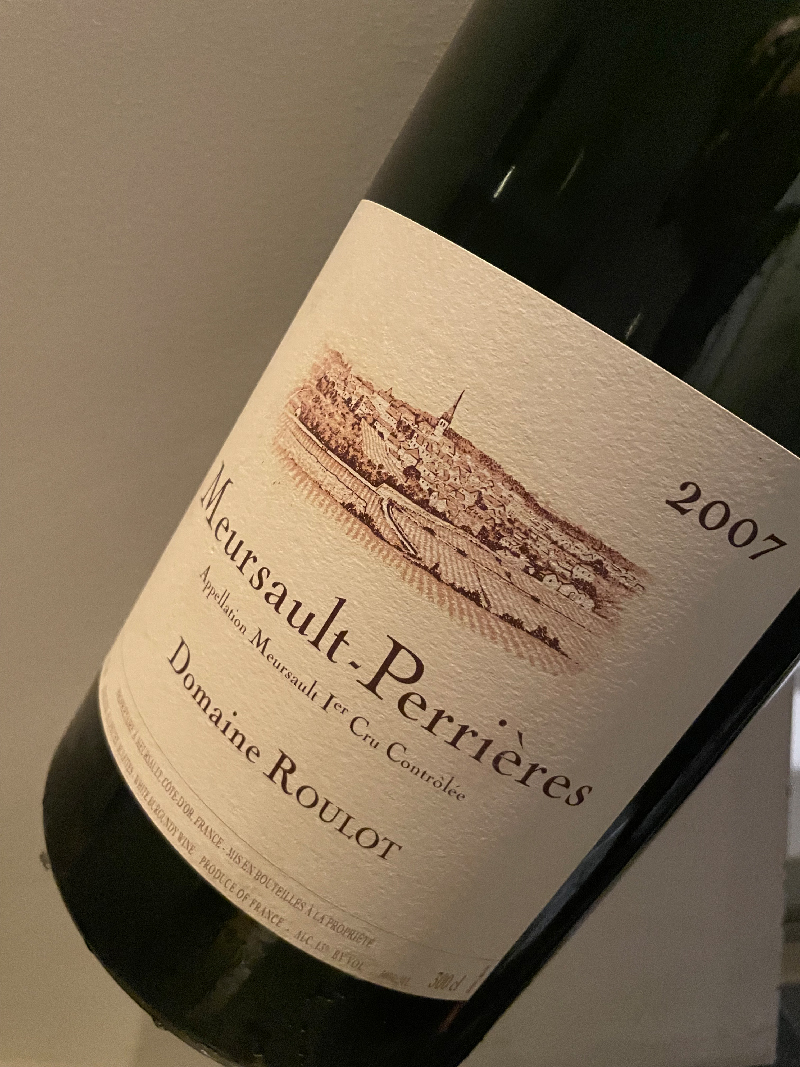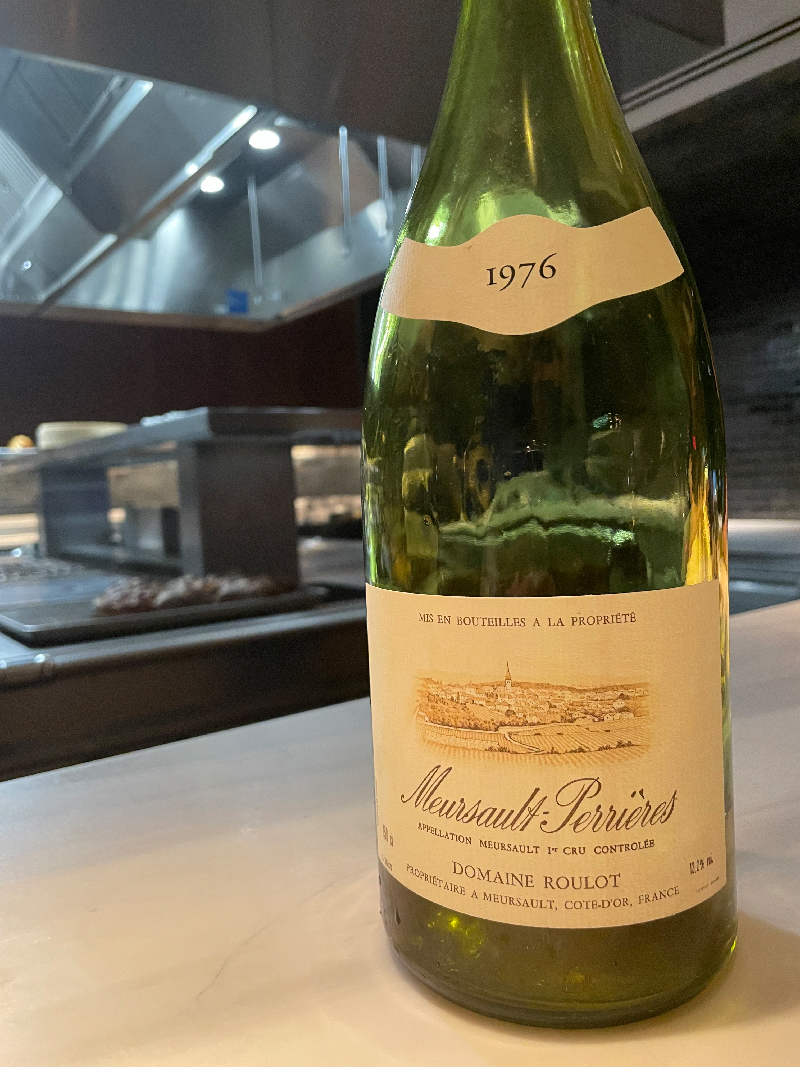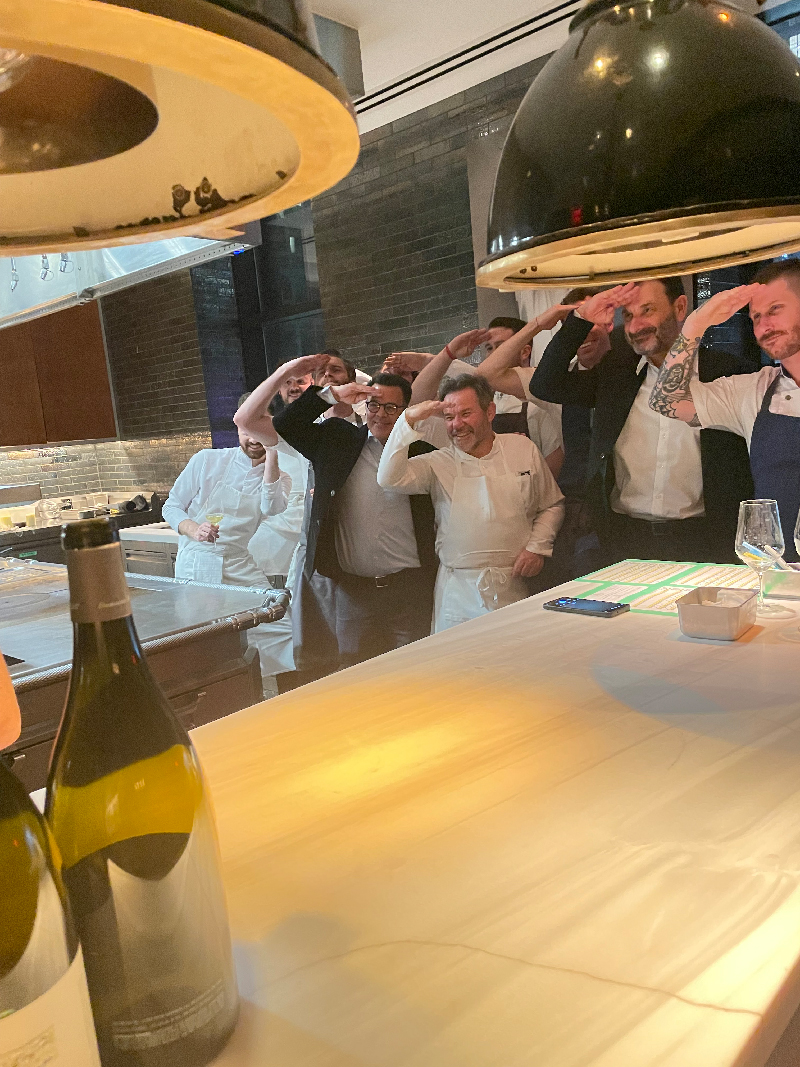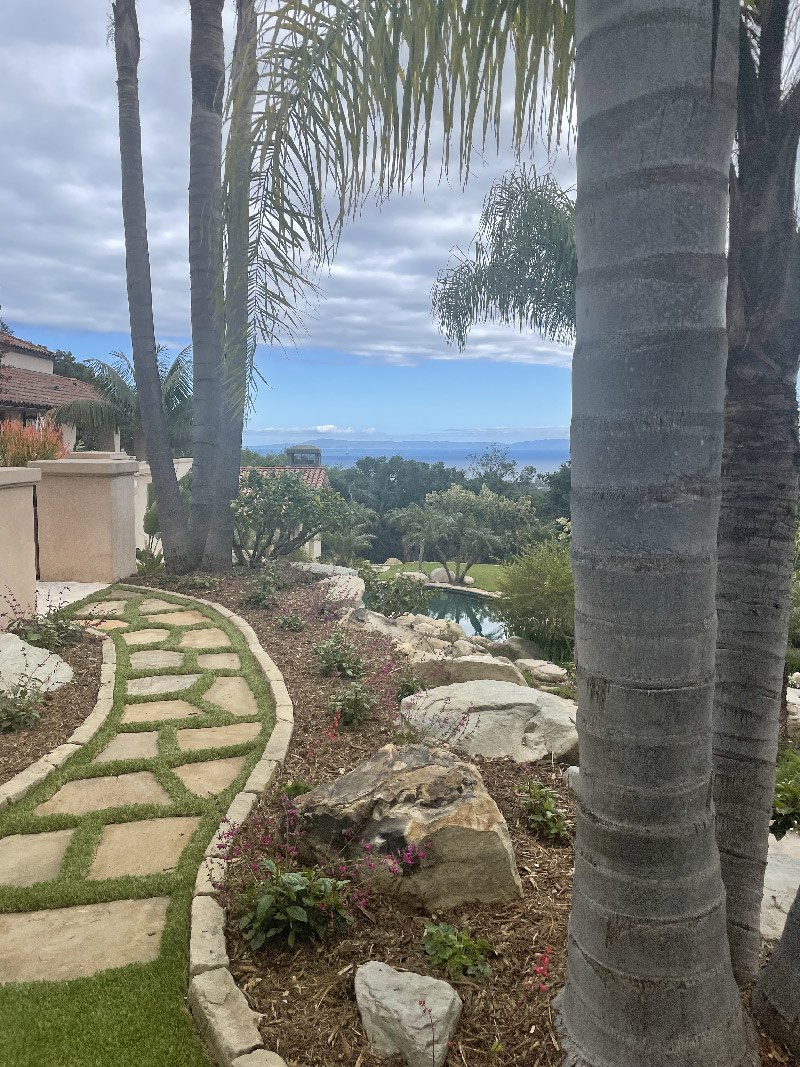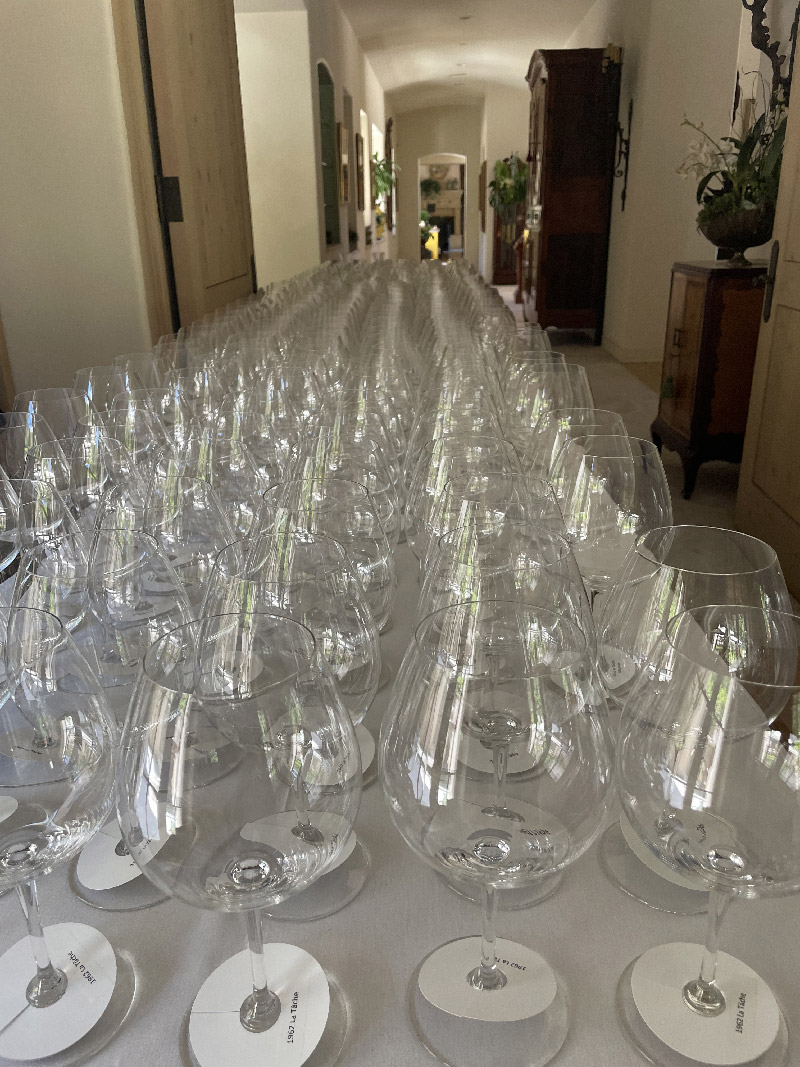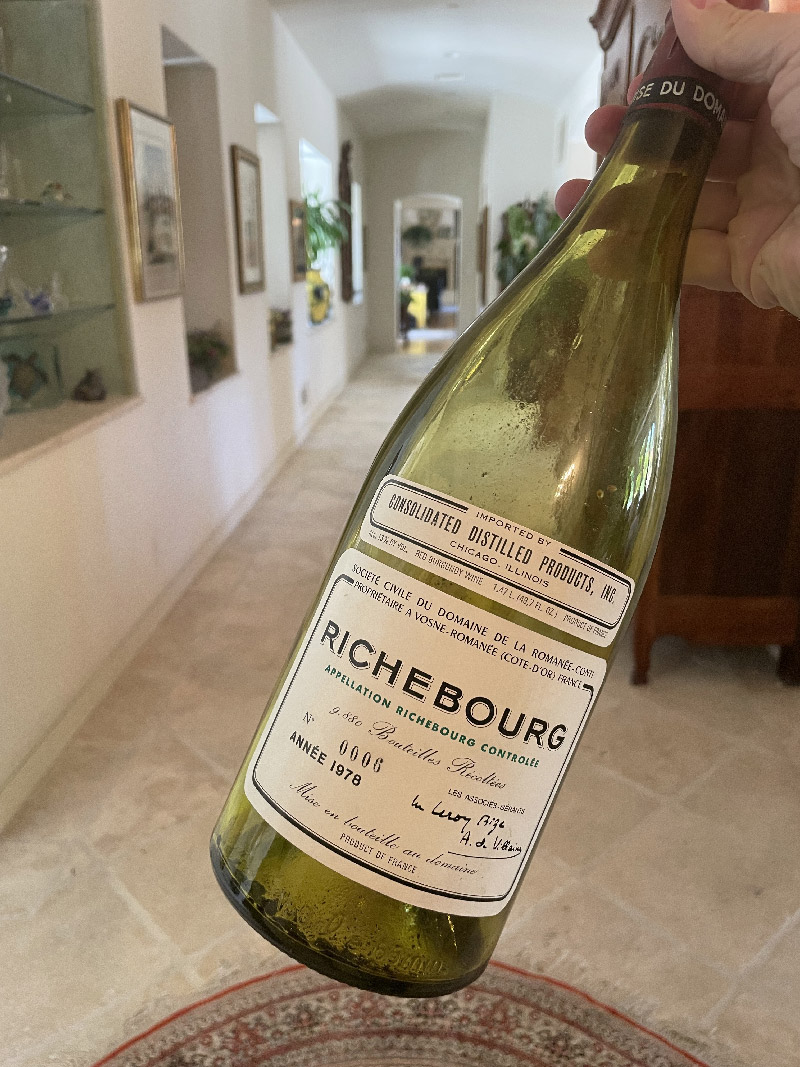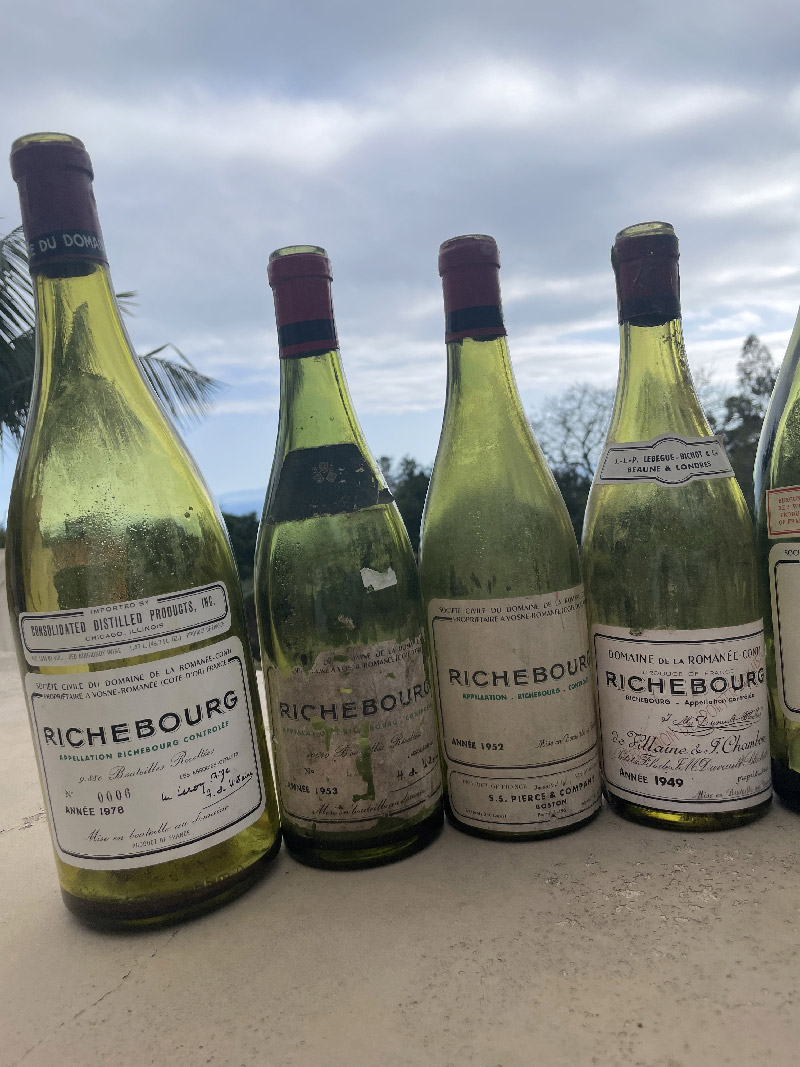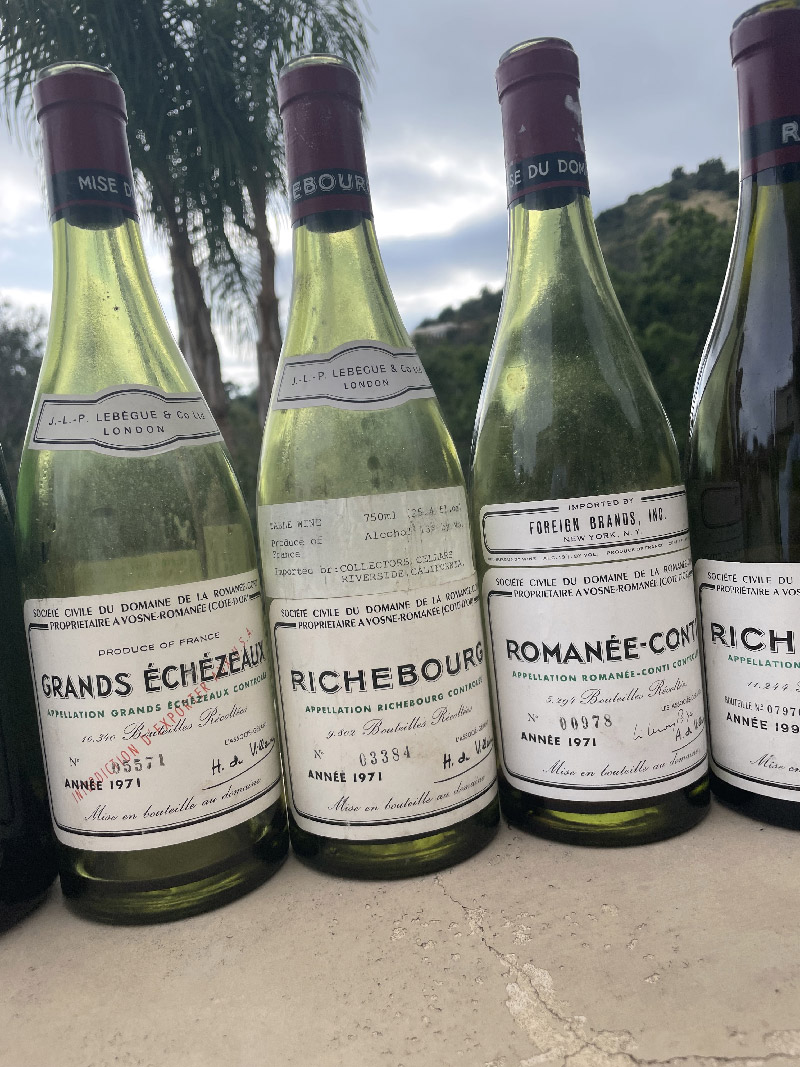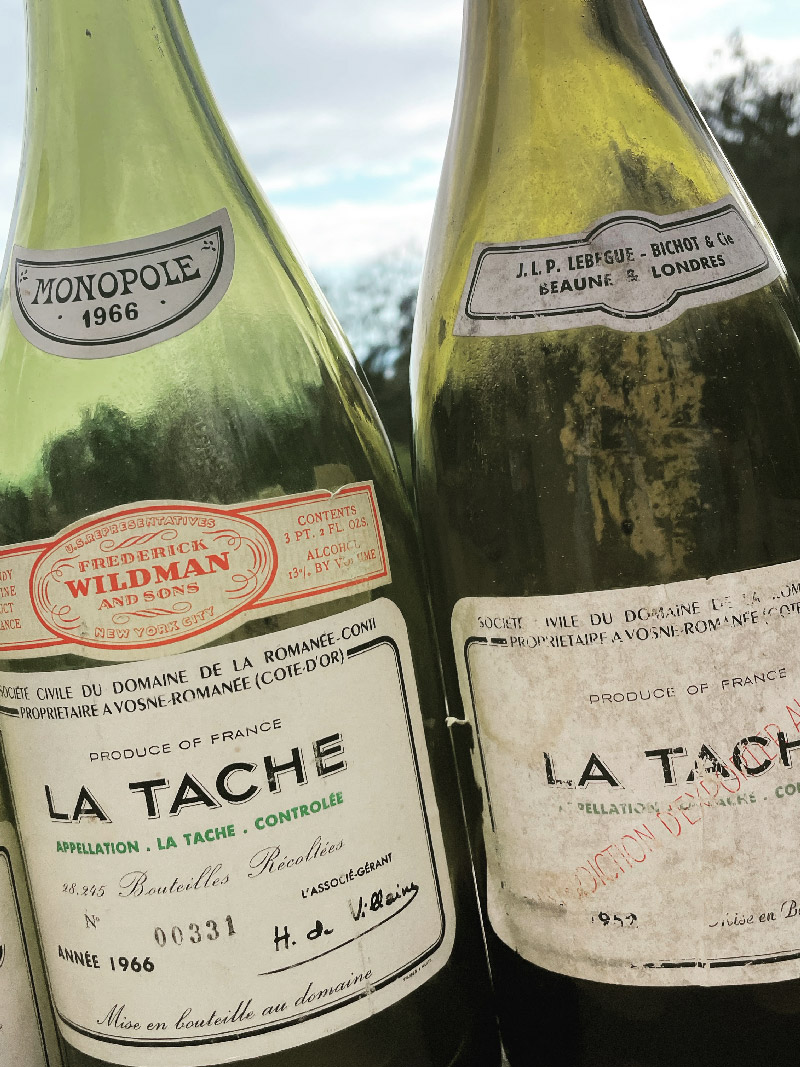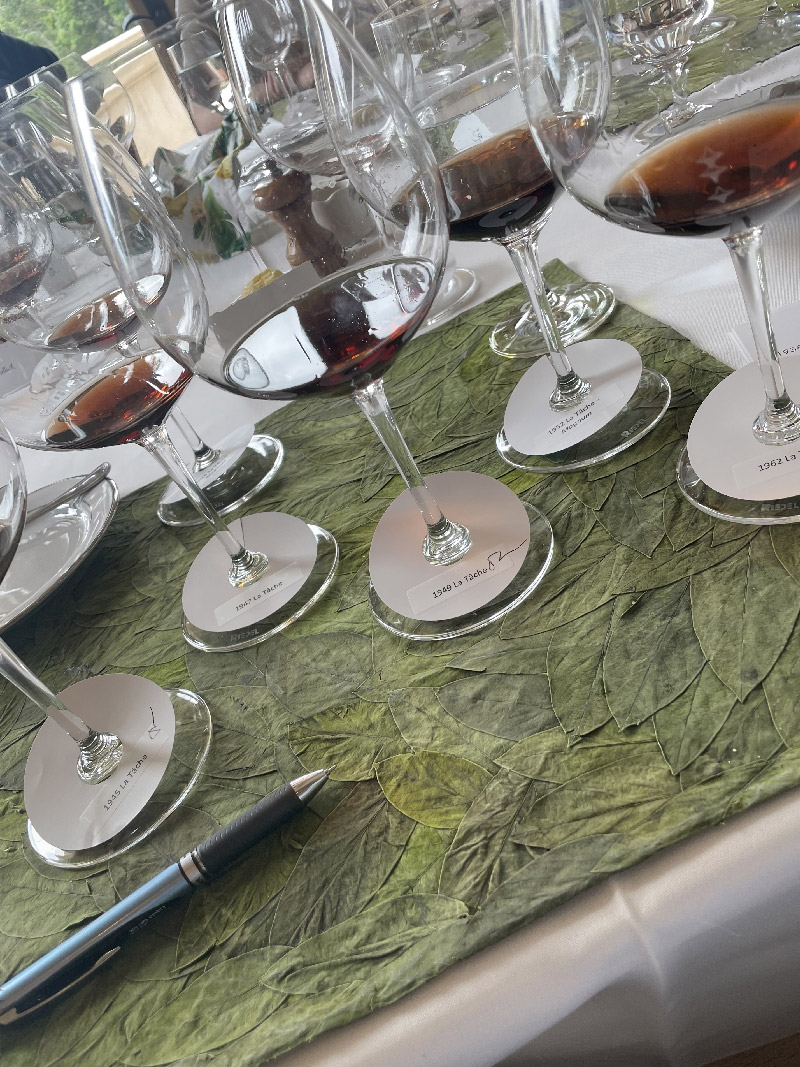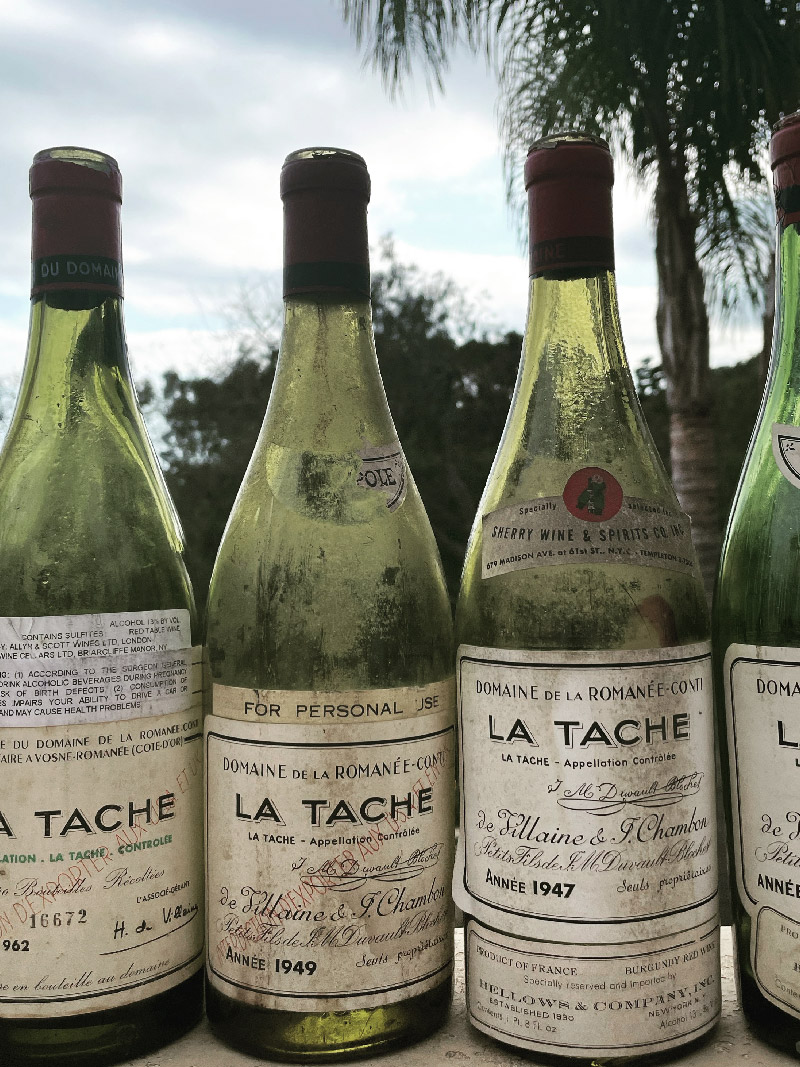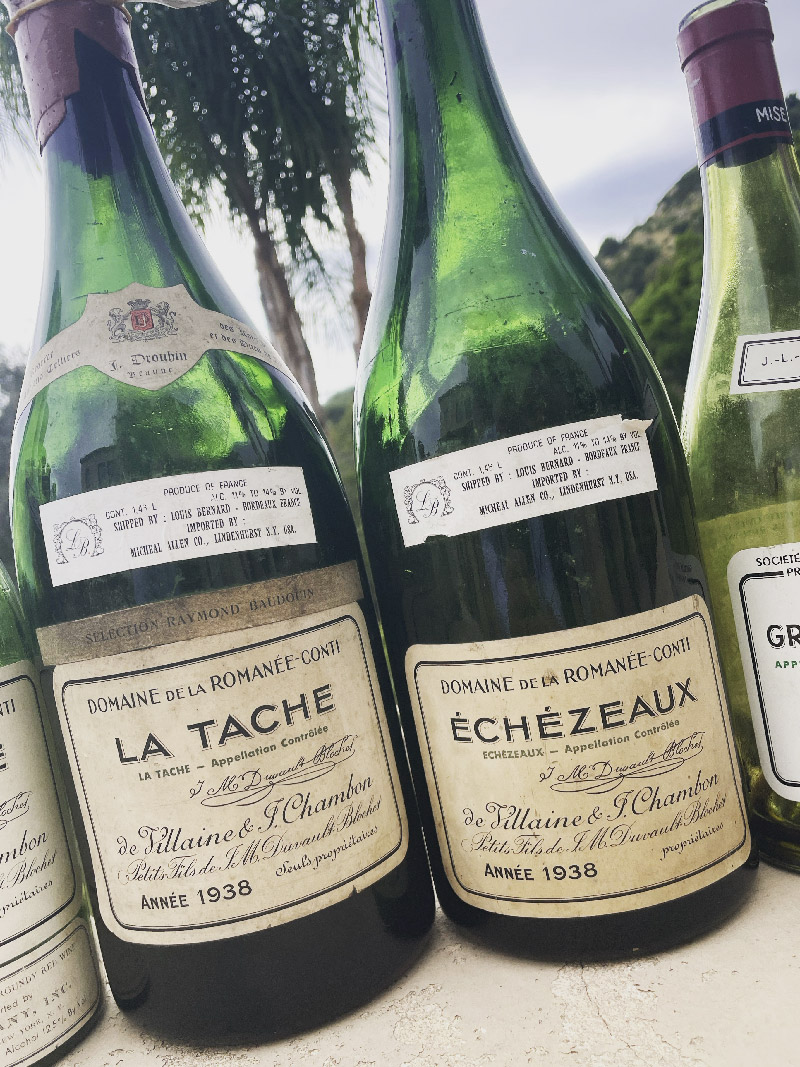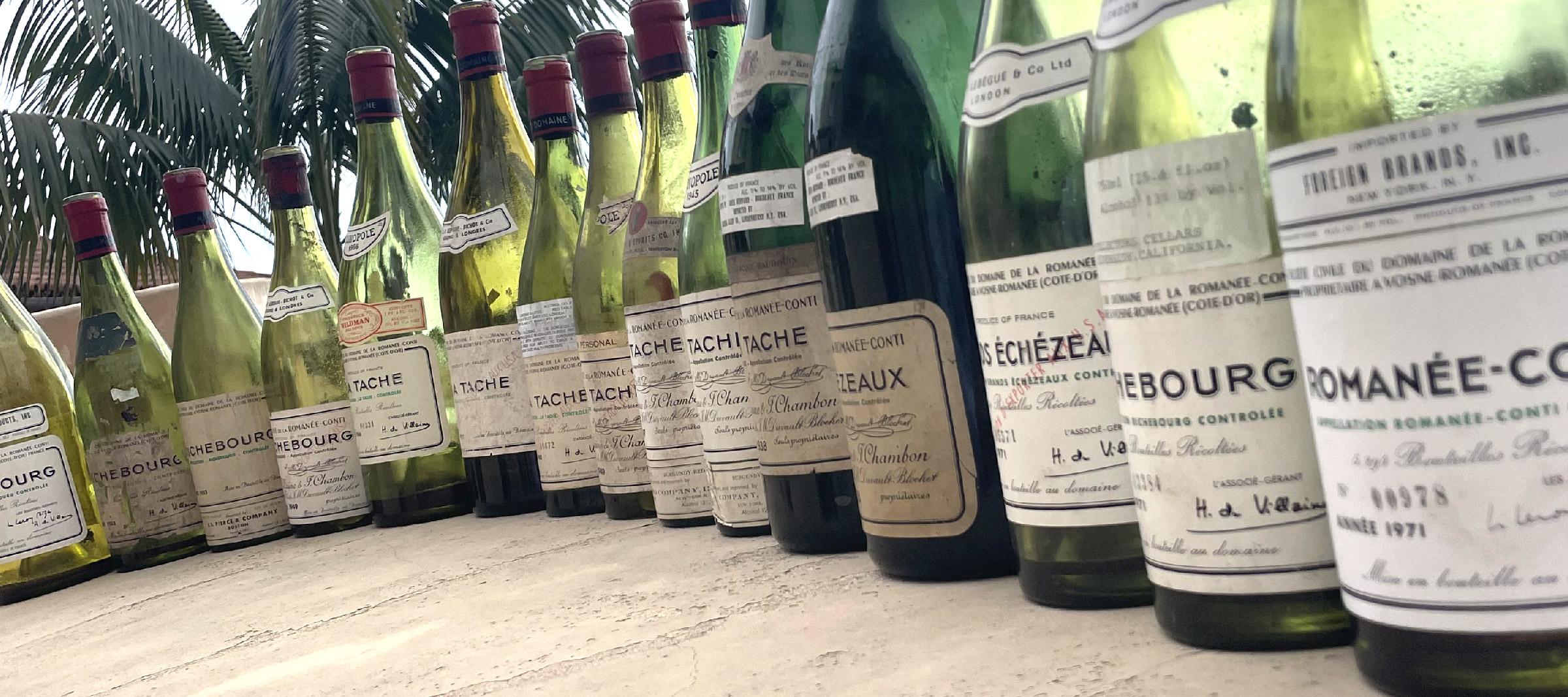The DRC Montrachet Tasting
May 29, 2025
No Comments
Hey, it’s been a while, nothing like a holiday weekend to catch up on some writing! Recently I had the good fortune of attending a DRC Montrachet tasting in New York City, and even though I started the day in Copenhagen, it was well worth the trip. Hamburger was there to orchestrate, and he provided a lot of tasty tidbits for his eager pupils in advance of the tasting. Edmond Gaudin de Villaine and Jacques Chambon, both descendants of Jacques-Marie Duvault-Blochet, were co-owners of DRC in 1942 when Jacques Chambon wanted to sell his half of the Domaine. To facilitate this, Edmond Gaudin de Villaine incorporated the Domaine into a company, thus allowing Henri Leroy to purchase 50% shares and become co-owner in 1942. It was under Henri Leroy’s direction that the falling pre-phylloxera vines of Romanee Conti were torn up in 1945 and replanted in 1947-48 with the first new vintage in 1952. Henri Leroy was also the one responsible for bringing Montrachet to DRC with the purchase of three parcels on the Chassagne side of the vineyard in 1963, 1965 and 1980.

The Lineup Was Set
The Montrachet vineyard is divided between Puligny and Chassagne-Montrachet, with the Chassagne ones allowed to add a “Le” in front as in Le Montrachet. There are about four hectares on each side, with Ramonet and Drouhin on the Puligny side, and Lafon, Leflaive and DRC on the Chassagne side. The Noblet family was making DRC through 2018, when Alexandre Bernier took over, who also brought with him a bit of a newer and leaner style, compared to the older style which was always pushing the ripeness. The 2019 would prove to be an interesting finale, that is, before the blind reds started popping out!

One

Two

Three Michelin Stars at Jungsik
This was a 21st Century retrospective, and we started from oldest to youngest with the 2000 DRC Montrachet. Its nose was more reserved than I thought it would be, but it still had exotic fruit and some sweetness with some orange kink and mango fruit. The tropical spice emerged, and it had this creamy and honeyed glaze. It was in a gorgeous spot, still young with a touch of waterfall. There was excellent acidity and nice balance here. It got more honeyed in the glass (97).

Mucho Montrachet!
We skipped along to the 2002 DRC Montrachet, which had a similar waterfall aroma with more sunny fruits. While also honeyed, it was much more smoky than the 2000, and, at first, also sexier. Its palate was sweeter and loaded with cocoa butter; this was a fat wine. There was more classic botrytis here in the ’02, which was sweeter and richer than its older brother. I found them stylistically different but qualitatively equal, but JK the IV thought the ’02 surpassed the 2000 in time (97).
The 2004 DRC Montrachet was another white Burgundy bringing sexy back, with more smoke and mineral toast, a toast that was really more of a lightly buttered brioche. This was a classy and classic Montrachet that had an elegance unfound in the first two Montys. While I liked its elegance, it didn’t have the same complexity as the first two, either (95).
The 2005 DRC Montrachet was oxidized. Some were finding some benefits like browned sugar and banana skin, but I wanted a new friend. To be polite, in general the 2005 vintage has issues for DRC’s Montrachet (DQ).
I have had a recent infatuation with the 2006 DRC Montrachet, an overlooked year in the pyramid of this century’s white Burgundy vintages. There was great botrytis here that was just in the right spot. It was another sexy DRC Montrachet, I think that is the first word that comes to mind for all of the good ones. It was nutty and salty, balanced but a touch rugged and more brawny after food. This is a rock n’ roll version of DRC’s Montrachet (96).
2007 was an early pet vintage of white Burgundy lovers, but it seems to be slipping a bit in the overall rankings these days. Enter 2007 DRC Montrachet. This was another vintage on the more elegant side, perhaps why it is losing its status a bit. The ’07 had great acidity, though, and great sweetness. There was an abundance of white fruits and a slight edge to its finish. ‘I could drink this whole bottle alone,’ one guest cooed. This was a delicious and harmonious Monty, definitely on a plateau but nothing wrong with that (97).
The 2008 DRC Montrachet saw two bottles opened, as the first was oxidized, and the second was still on the darker side as well. The nose was great though, buttery and coconutty with great spice. It was super smooth with an exotic and sweet, ‘over the top’ style. Someone likened it to ‘Anna Nicole,’ while another was more in the ‘Zsa Zsa’ era lol. Honestly it was a touch too tropical for me on the palate, a textbook example of a vintage where the DRC Monty can be too over the top. I think this vintage is starting to head south, because for a while it was another pet vintage for many DRC Montrachet lovers, or perhaps it was just the bottle (94?).
The 2009 DRC Montrachet felt like we were crossing over into a new generation of wines, like before we had the boomers and now it was the Gen-Xers’ turn lol. This was a smoky, musky wine with a little Texas smokehouse to it. It had a fat, round and rich palate, and it was a touch cloying, as expected for me with the ’09 vintage. It grew on me in the glass, and JK the IV found it ‘better than the ’04 but behind the ’06.’ Ultimately, it held its own nicely (95).
One of the wines of the tasting, if not the wine of the tasting, was the 2010 DRC Montrachet. This was a superb wine! It was so long, sexy and elegant, like it was dripping with diamonds. Its mineral deposits were enough to fund a Trump trade deal, and it felt like they were all in an ice cave. This was suave and stylish, but its length was certified packed and stacked. Hamburger hailed it ‘stratospheric’ (98+).
The 2012 DRC Montrachet was another not great bottle, and the third off bottle of the night. White Burgundy can be a frustrating habit with premox and the such; however, the heights of the overall evening had everyone in great spirits (DQ).
I loved the 2013 DRC Montrachet! Similar to 2006, this is another one of those vintages that people are overlooking, but one that can deliver on the white (and red) side. The ’13 had a fabulous nose full of special spice and pixie dust. There were great wintry fruits here with a dusty and smoky finish. This was a veritable winter wonderland with its icy fruits and minerals. Its palate was sensual with a sweet and creamy finish. I heard ‘so good’ on more than one occasion (97).
It was on to the other wine of the night, the 2014 DRC Montrachet. Make that WOTN. Although it was a bit shy compared to all the others, this was wound up like the finest Swiss watch. It was deadly silent in the nose, what some might call ‘closed’ as many top 2014 whites are. The palate, however, was spectacular. It had the style of 2010 with more stuffing. This was next level white wine, and most importantly, next level Montrachet (99).
The 2015 DRC Montrachet was sweeter and simpler than the 2014, which I guess could be said for every other vintage as well! It felt more sugary in a cheaper, saccharin way. I didn’t feel the same raw materials were here as in the others. It was very honeyed in its flavor profile, taking the sweetness to another level. It was one distinguished guest’s favorite, who noted its opulence, although another also found it ‘sweet and obvious’ (94).
I guess DRC Montrachets need ten years, because the 2017 DRC Montrachet was an infant by comparison. While reserved in its nose, it felt weighty. Its palate even more so, super heavy was an apt descriptor, and frankly it was too rich and too young. While decadent, the 2017 felt like it needed another decade. It had nice lift, but it was an undeveloped monster (97+).
The 2018 DRC Montrachet was another heavy and cloying wine, and someone noted the ‘heat wave’ in 2018. So heavy and so concentrated were the bulk of my notes, while another added, ‘more ripe and tropical’ (96).
And now for the grand finale, and the new style, the 2019 DRC Montrachet. It was definitely a bit cleaner, and while 2019 is not supposed to be the best white wine vintage, there was a noticeable difference here from the last two. It was much less heavy, and while smoky it was also more oaky and oaty. It felt like it had more flaws, but don’t get me wrong, it was still DRC Montrachet. I will leave the vintage versus winemaker debate open to discussion (95).

Three Blind Reds

Off The List
The next blind red had an initial guess of Mugnier, and it was a bretty, sweet but dirty wine, which is an apt descriptor for some bottles of Mugnier. It was leathery, and a 2008 guess came from the crowd, as did Mugneret-Gibourg. There was nice spice in this 2017 DRC Romanee St. Vivant. I really like the vintage in general for Red Burgundy for its open and giving style, but this was one 2017 that was shutting down. Maybe that is something to keep an eye on (94).
The next blind was the same wine but a different vintage. This 2015 DRC Romanee St. Vivant had a pure nose with great fruit. It was so succulent with nice leather components and so much acidity. I guessed DRC Richebourg, but again it was the RSV! This was a thick, great red, epitomizing 2015 at its finest (97).
There was another red on this glorious night, and almost everyone contributed. Somehow it went from two guys splitting the bottle to ten, but when it’s a 2021 DRC Romanee Conti, no one was complaining. I think this went to the top of my list for how much I ever spent on a glass, and I think this is about the max. Why 2k lol. Its nose was deep and serious, so expressive with unreal spice. It was oozing red, juicy fruits. The palate was so ’21, forward and friendly despite it being RC, and it was also super sweet, not in a bad way but in a noticeable way. Juicy and sweet were the two lasting impressions; while it was still extraordinary, it seemed different from my usual RC experiences. Winemaker or climate? Either way, it was a sexy beast (97).
There was one more wine on this magical evening, and I guessed 2021, which was accurate and perhaps made easier by the previous pour, as well as the fact that it was also DRC. The 2021 DRC La Tache was another super sexy cherry bomb. It was rich, deacadent and honeyed. There were loads of kinky raspberry with a pinch of purple. This was a bright light of a wine, although the only question I had about it was whether it was too sweet and too soon (96).
Long live DRC!!!
FIN
JK
FIN
JK

























